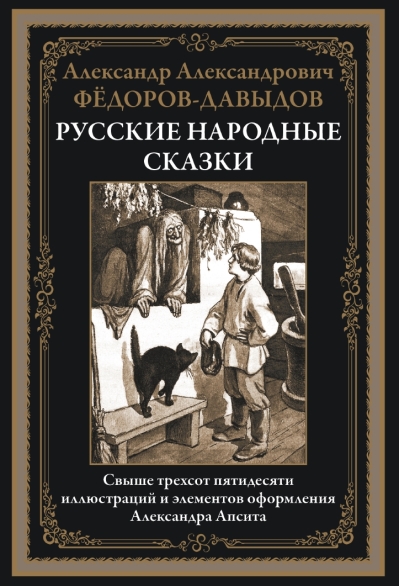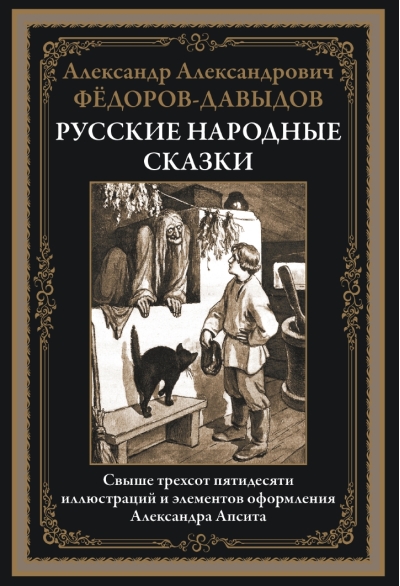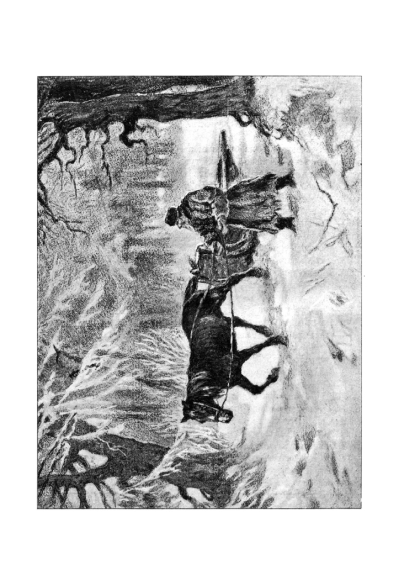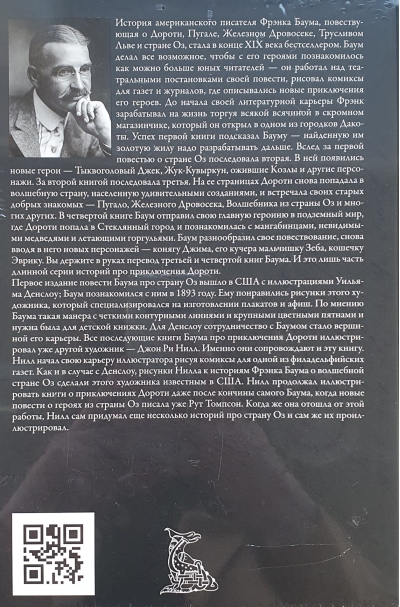Russian folk tales
14.99 €
Out of stock
The book includes one hundred and twelve Russian folk tales collected and processed by the famous children's writer, publisher, translator and one of the founders of the children's magazine "Murzilka" Alexander Alexandrovich Fedorov-Davydov (1873-1936). Most of these tales are unfamiliar to modern readers. The edition is decorated with dozens of bookmarks, splash pages and drawings by the artist Alexander Petrovich Apsit (1880-1943).
The fairy tales in this book were collected by the remarkable writer and translator Alexander Alexandrovich Fedorov-Davydov (1873-1936). In childhood, the future writer was noticeably influenced by his grandfather, Ivan Ivanovich Davydov, an academician and dean of the History and Philology Department of the Philosophy Faculty of Moscow University. The young man's father was a teacher, from him Alexander inherited the desire for enlightenment. In adulthood, Fedorov-Davydov not only published in various magazines, but also devoted much time to publishing. Before the revolution, he was the editor and publisher of several children's magazines, which published works by Mamin-Sibiryak, Nemirovich-Danchenko, Chekhov and other leading Russian writers; many materials were devoted to native nature. In Soviet times, Fedorov-Davydov became one of the founders of the popular Soviet children's magazine Murzilka. During his life, Alexander Alexandrovich wrote more than a hundred books for children, as well as notes, articles and essays. He once remarked that "we do not know a lot of folk Russian fairy tales". And indeed, almost all of the tales he collected and published will seem completely unfamiliar to modern readers. The illustrations to the fairy tales in the edition are by Alexander Petrovich Apsit (1880-1944). The future artist was born in Riga in a working family of a blacksmith and a laundress. When Alexander was fourteen years old, his parents moved to St. Petersburg. The architecture and the very atmosphere of the great city made the strongest impression on the young man, and he began to be interested in art, felt drawn to drawing. Alexander began copying paintings of famous masters and attending the "Workshop for students" of academician Lev Evgrafovich Dmitriev-Kavkazsky. In this studio, Apsit's abilities were fully revealed, and in a few years he began to perform illustrations for the magazine "Niva" and cooperate with the famous publishing house Sytin. Alexander Petrovich's talent allowed him to work quickly and easily in the most diverse areas of fine arts. He performed wall paintings in the Athos Monastery, made a magnificent series of illustrations for Tolstoy's "War and Peace" and for the fairy tales of "One Thousand and One Nights". At the same time, Apsit drew advertising posters, labels, Easter cards and movie posters in Art Nouveau style. The drawings for Russian fairy tales in this edition demonstrate only one of the many facets of A. P. Apsit's talent. Nowadays, the works of this artist regularly appear at international auctions.
The fairy tales in this book were collected by the remarkable writer and translator Alexander Alexandrovich Fedorov-Davydov (1873-1936). In childhood, the future writer was noticeably influenced by his grandfather, Ivan Ivanovich Davydov, an academician and dean of the History and Philology Department of the Philosophy Faculty of Moscow University. The young man's father was a teacher, from him Alexander inherited the desire for enlightenment. In adulthood, Fedorov-Davydov not only published in various magazines, but also devoted much time to publishing. Before the revolution, he was the editor and publisher of several children's magazines, which published works by Mamin-Sibiryak, Nemirovich-Danchenko, Chekhov and other leading Russian writers; many materials were devoted to native nature. In Soviet times, Fedorov-Davydov became one of the founders of the popular Soviet children's magazine Murzilka. During his life, Alexander Alexandrovich wrote more than a hundred books for children, as well as notes, articles and essays. He once remarked that "we do not know a lot of folk Russian fairy tales". And indeed, almost all of the tales he collected and published will seem completely unfamiliar to modern readers. The illustrations to the fairy tales in the edition are by Alexander Petrovich Apsit (1880-1944). The future artist was born in Riga in a working family of a blacksmith and a laundress. When Alexander was fourteen years old, his parents moved to St. Petersburg. The architecture and the very atmosphere of the great city made the strongest impression on the young man, and he began to be interested in art, felt drawn to drawing. Alexander began copying paintings of famous masters and attending the "Workshop for students" of academician Lev Evgrafovich Dmitriev-Kavkazsky. In this studio, Apsit's abilities were fully revealed, and in a few years he began to perform illustrations for the magazine "Niva" and cooperate with the famous publishing house Sytin. Alexander Petrovich's talent allowed him to work quickly and easily in the most diverse areas of fine arts. He performed wall paintings in the Athos Monastery, made a magnificent series of illustrations for Tolstoy's "War and Peace" and for the fairy tales of "One Thousand and One Nights". At the same time, Apsit drew advertising posters, labels, Easter cards and movie posters in Art Nouveau style. The drawings for Russian fairy tales in this edition demonstrate only one of the many facets of A. P. Apsit's talent. Nowadays, the works of this artist regularly appear at international auctions.
See also:
- All books by the publisher
- All books by the author
- All books in the series Library of World Literature

























































